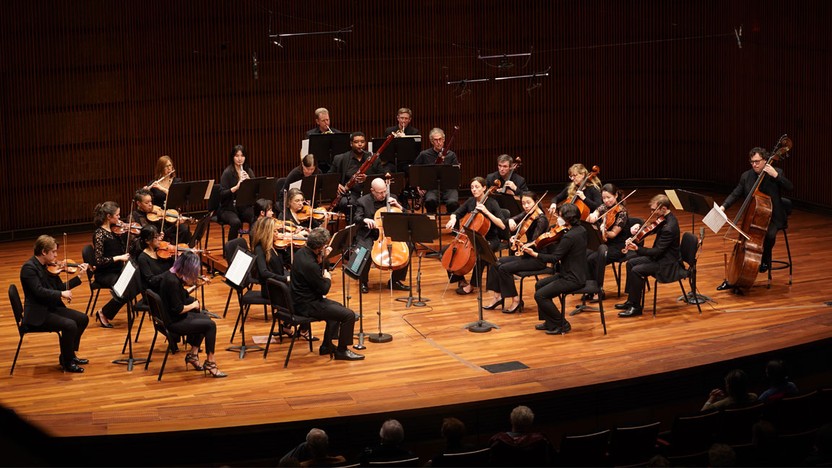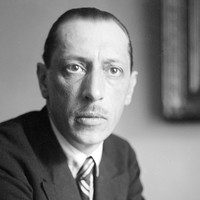Beethoven’s Fifth Symphony



 Listen to Audio
Listen to Audio
Igor Stravinsky burst onto the world stage with three legendary ballets for Serge Diaghilev’s Ballets Russes: The Firebird (1910), Petrushka (1911) and The Rite of Spring (1913), all on Russian folk themes. By the time the world warmed up to the primitive force of those early masterpieces, Stravinsky had already moved on to a smoother neo-classical style and more austere subjects . One area of focus was ancient Greece and Rome, first in Oedipus Rex (1927) and revisited in Apollon musagète (1928), Persephone (1934), Orpheus (1947) and Agon (1957).
The commission for Apollon musagète (later shortened to Apollo) came from Elizabeth Sprague Coolidge, who asked Stravinsky to create a work for the 500-seat theater built in her name at the Library of Congress in Washington, D.C. There was room for only a small cast of dancers and musicians, which led Stravinsky to create a scenario for Apollo and three muses (out of the original nine) and a sparse accompaniment of strings. The ballet premiered on April 27, 1928, with choreography by a Ballets Russes alumnus, Adolf Bolm. The bigger event of the season, however, was Apollo’s European premiere on June 12 by Diaghilev’s company in Paris. That production featured choreography by a 24-year-old newcomer who would soon become a transformative force in ballet: George Balanchine.
In Greek mythology, Apollo is associated with light and truth, as well as music and poetry. Philosophers and aesthetes — most notably Nietzche, in The Birth of Tragedy — have used the term “Apollonian” to describe art that exhibits order, balance, clarity and precision. When Stravinsky played some of his Apollo music on the piano for Diaghilev, the impresario immediately recognized its “Apollonian” brilliance. “It is, of course, an amazing work, extraordinarily calm and with greater clarity than anything [Stravinsky] has done,” wrote Diaghilev to his partner and the ballet’s eventual star, Serge Lifar. “Filigree counterpoint around transparent, clear-cut themes, ... music not of this world, but from somewhere above.”
Aaron Grad ©2010
 Listen to Audio
Listen to Audio
The Fifth Symphony comes from the heart of Beethoven’s “middle” period, a phase when his encroaching deafness changed his relationship to composing and performing, and when the crystalline classicism of his early works gave way to a more focused and concentrated manner of writing. Rather than issuing flowing melodies, Beethoven’s quintessential works from this period build highly integrated forms out of compact, elemental materials.
The most famous musical nugget Beethoven ever conceived — perhaps the most recognizable motive ever penned by a composer — comes at the start of the Fifth Symphony, when the orchestra delivers four unadorned notes: three short repetitions of G dropping to a sustained E-flat, representing two notes from the home triad of C minor. This one motive fuels the entire first movement based in Beethoven’s favorite key for stormy and fateful music, and traces of it return later in the symphony.
The second movement features a double set of variations, alternating the development of two contrasting themes. Some of the accompanying rhythms echo the short-short-short-long rhythmic pattern from the first movement, contributing to the symphony’s organic cohesion.
The Scherzo retreads the central tonal conflict of the work, juxtaposing a moody first theme in C minor and a spry fugal section in C major. A coda builds tension that releases directly into the triumphant finale, anchoring the redemptive new key of C major with the added brilliance of piccolo a
Aaron Grad ©2020
Get driving directions and find nearby parking.
Find dining options close to the venue.
View seating charts to find out where you'll be seating.
Get driving directions and find nearby parking.
Find dining options close to the venue.
View seating charts to find out where you'll be seating.
